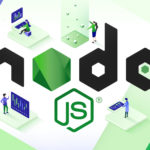Best Mining Rig For Ethereum And Bitcoin 2019
Ethereum and Bitcoin make up a major segment of the mining operations going on with regards to cryptocurrency these days. Investopedia is quick to note that mining in this way doesn’t mean the traditional methods of heading out on a claim with pickaxes and dynamite. Cryptocurrency mining is something a lot of people got into when the price of BTC struck out over the $10,000 mark. Since the massive decline in prices, many miners have either left off cryptocurrency mining as a hobby, or designated their mining capacity to a different sort of coin. For us to understand why this is so, we must explore the idea of mining difficulty.
Mining Difficulty and Why it Matters
Cryptocurrency mining deals with verifying a blockchain. Once the chain is verified, all users that were successful in verifying the chain get a small portion of the “reward” which is usually a payout in the particular cryptocurrency for work done and submitted for verification. With each successive block, however, the difficulty in solving the algorithm goes up by just that little bit. As Coindesk mentions, some coins, like Ethereum have difficulty “spikes” hard-coded into their algorithms for if or when the coin is involved in a fork, ramping up the difficulty to make mining the initial blockchain have a lower incentive. Mining difficulty matters to us because, in 2019, if you’re building an ETH or BTC mining rig, you’re going to need to be aware that at current, the difficulties on the chains are extremely high. The investment may make a small amount of income, but likely not enough to payback for the rig. There are ways around this, since a crypto mining rig can be used to mine any type of coin (not just Bitcoin or Ethereum) and there are a lot of other altcoins on the market that have a decent payoff associated with them. A little research with bitcoin trader review will clue you in to which one is most profitable for your mining setup.
Putting Together a Mining Rig
A mining rig isn’t just another computer. It’s a dedicated mining station that exists to create coins for its owner. In order for it to be this, it needs specialized equipment and by the time you’re done building, it won’t look much like a PC, but it’ll be a hardcore mining installation that you can be proud of. Let’s take look at the components and our available options in 2019:
- Framework: Aluminum frames are more desirable as they are conductive (to aid in grounding the internal parts) and offer a solid, lightweight construction base to work from. Wooden frames also exist but as they are flammable, and don’t provide the conductivity, they aren’t as good a choice.
- Motherboard: Choosing a motherboard for mining means understanding what type of ports and in what number you’re looking for. Generally, for a mining rig, you’re going to need a motherboard that supports between four (4) and eight (8) cards in PCI-E slots. A relatively inexpensive options is the Gigabyte GA-Z270P-D3 which can support up to six (6) simultaneous video cards. The Gigabyte GA-970A-DS3P is a decent alternative for AMD users, but only has space for 5 cards in total.
- Processor: Based on the board you’ve chosen the processor would need to have the correct socket type to fit that board. For the Gigabyte GA-Z270P-D3, a Celeron G3900 processor works just fine. For AMD users on the 970A chipset, the Athlon X3 445 is a good choice. If you intend on mining coins that utilize CryptoNight as their mining algorithm, then a multi-threaded core, like the Intel Core i series (i3, i5, i7) is a recommended buy.
- RAM: While in a desktop PC, quality is what the user wants, in a mining rig, it’s recommended to go for more instead of better. At the very least, 4GB of RAM is needed. The type of RAM that the motherboard accepts should be taken into account. Most modern boards support either DDR3 or DDR4, so determining which type of RAM the motherboard uses ensures you don’t waste money buying the wrong type.
- Hard Drive: The newest rage in PC construction is sticking an SSD in everything, but in the case of a mining rig, that’s probably not what you want to do. The size of the storage is negligible and it makes no difference to how fast the machine can hash, and by extension, how fast it can make you money. The minimum you may need to run a rig is between 50GB and 75 GB of space, so any old hard drive that doesn’t have much of a use anymore can get a new lease on life powering the OS of a mining rig easily enough.
- PSU: The power supply is a very integral part of the rig. The aim is to have a PSU that limits the amount of energy consumption while at the same time offers enough power to run the video cards and the motherboard. Ideally, the PSU should be 80-Plus certified (high efficiency). Prices vary depending on how well-certified the PSU is. Certification levels range from Plus, Plus Bronze, Plus Silver, Plus Gold, and Plus Platinum. Corsair PSU’s are the most in-demand Plus Gold units and can weigh in at $100 for 750 watts of power.
- Video Cards: The video card is where most of the mining will be taking place. There’s no direct winner between NVidia and AMD regarding mining performance, so either one works just as well. The video card simply provides a hardware for running the algorithms, but the coins being mined tend to be more or less efficient depending on what type of GPU they’re working with. NVidia cards usually present less of a problem when it comes to tuning and cooling, but AMD cards tend to be more robust, can take more heavy usage without breaking down, and are better suited to some types of coin. From the NVidia GTX series, the lower-end high-memory cards are good buys for mining. In the AMD arena, the VEGA cards are the best investment (although not inexpensive), although the lower end cards and older cards (like the R9 290X) can provide a significant amount of mining potential for much lower price point.
Long Term Outlook
While BTC and ETH may not be as profitable as they were a few years ago, that doesn’t mean that cryptomining on the whole is unprofitable. According to Bitcoin Market Journal, cryptocurrency profitability changes rapidly, so it’s impossible to know from one month to the next what’s most profitable. A mining rig can usually handle mining most altcoins, especially those that don’t allow for ASIC use. Long term, cryptocurrency still remains one of the most impressive disruptors of the current financial sector. It’s very likely that, as time goes on, more businesses will adopt different cryptocurrency methods as payment.















